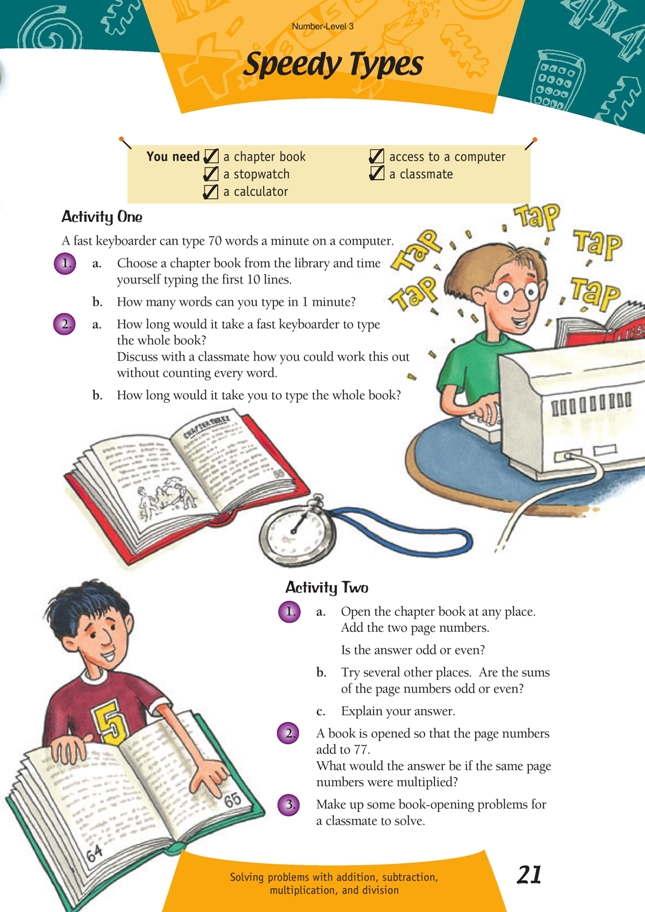This is a level 3 number activity from the Figure It Out series. It relates to Stage 6 of the Number Framework.
A PDF of the student activity is included.
Click on the image to enlarge it. Click again to close. Download PDF (231 KB)
solve problems involving addition, subtraction, multiplication, division
FIO, Level 3, Number, Book 1, Speedy Types, page 21
Access to a computer
A classmate
Activity One
This activity provides some challenging problems using addition, multiplication, and division.
Students may need to use a calculator to multiply and divide.
You may want to decide which type of book to give to different groups of students. A book with large type may make the activity a little easier.
If minute timers with alarms are not available, use partners to time students’ typing. Students should identify the final word of the 10 lines before they start to type.
To answer question 1b, students will have to divide the number of words by the time. The time will probably be in minutes and seconds. They may need help here. They could change the time to seconds. Divide the words by the seconds and then multiply by 60 to find the words per minute.
Have students round their answers to the nearest whole number. For example, “I did 80 words in 3 minutes 25 seconds. That’s 80 words in 205 seconds (3 x 60 = 180. 180 + 25 = 205 secs). That means I did 80 ÷ 205 words each second. I times that by 60 to find words in 1 minute. That’s about 23 words a minute.”
For question 2a, students will need a sensible strategy for working out the approximate number of words in the book. For example, each student in a group could randomly select a page, count the words on that page, and then regroup to work out the average for the group. Another strategy would be to find the average number of words in a line by sampling 10 lines. Then find the average number of lines on a page over five pages. Multiply the average number of words in a line by the
average number of lines on a page to find the average number of words per page.
Have the students check whether there are any illustrations. If there are, students will need to subtract the amount of space or pages that the illustrations take up.
Remember that this is an estimation activity, so students should not worry if the answer is not particularly exact.
Activity Two
Once the students realise that a book opening will always produce pages with two consecutive numbers, they should be able to work out the problems.
In question 3, students could use the previous question as a model for making up their own problem. If they choose an even number for the sum of the two pages, refer them to the answer to question 1.
Answers to Activities
Activity One
1. Practical activity. Answers will vary.
2. Answers will vary. (Estimates of the number of words in books should be discussed.)
Activity Two
1. a. Odd
b. Odd
c. One of the page numbers will always be odd and the other even. Only two even
numbers added together or two odd numbers added together can give an even
result.
2. 1 482
3. Answers will vary.
